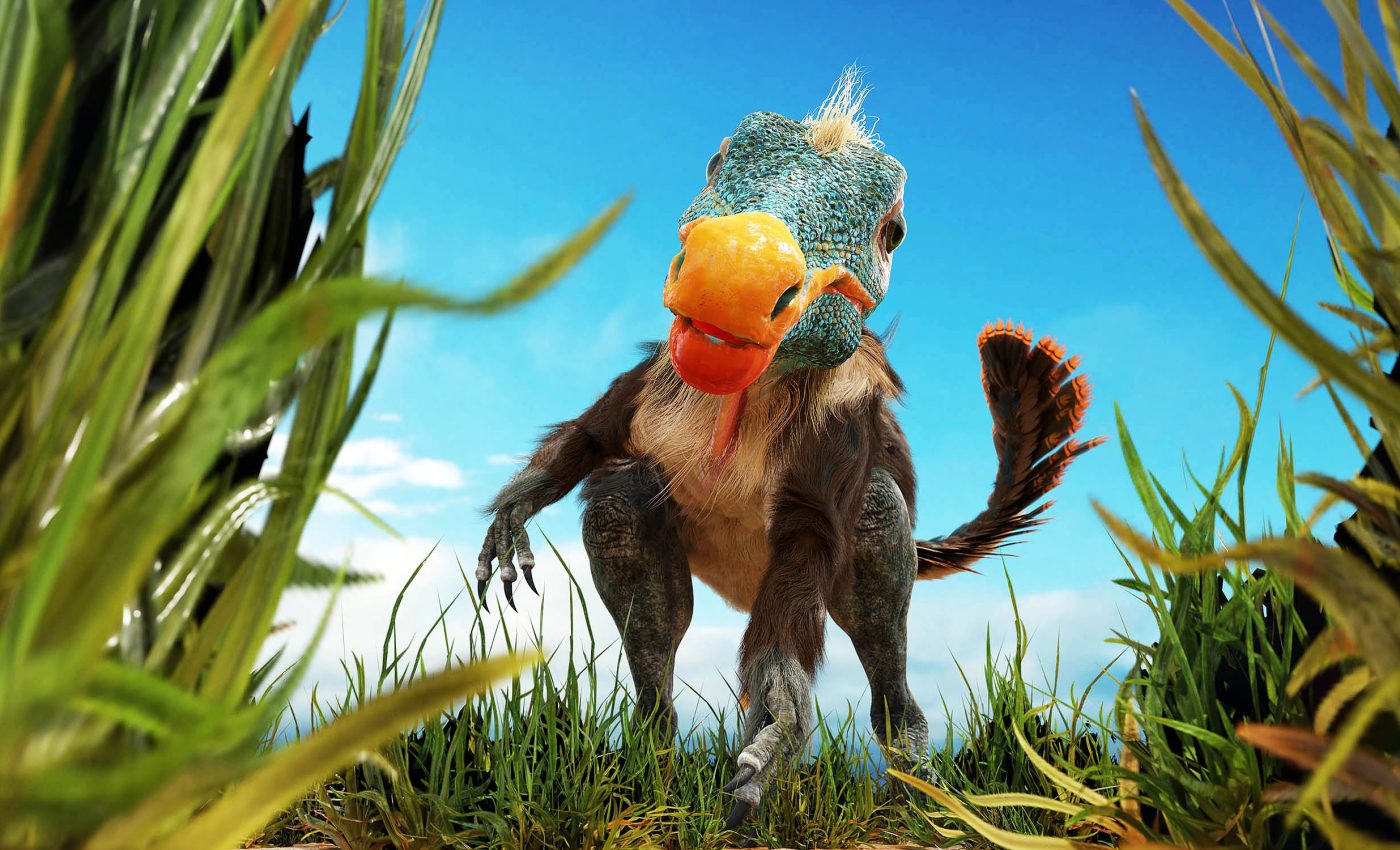
Dinosaurs evolved feathers for much more than just flying
Just a few decades ago, mentioning “dinosaurs with feathers” in a crowd of scientists would have garnered you some strange looks.
Fast forward to present day, it’s common knowledge that feathers evolved in many dinosaur species, as archaeologists have unearthed dozens of dinosaurs adorned with feathers and feather-like body coverings.
Why and how did dinosaurs evolve feathers?
Dinosaurs evolved feathers primarily for insulation and temperature regulation, a fascinating adaptation that showcases the complexity of evolutionary processes.
Early feathers likely resembled simple filaments or downy structures, which assisted small theropod dinosaurs in maintaining body heat, particularly in cooler environments or during climate fluctuations.
This insulation would have been especially beneficial for smaller species with a high surface area to volume ratio, enabling them to conserve energy and thrive in diverse habitats.
Beyond thermal advantages, feathers also played a crucial role in display and communication. Could elaborate plumage have been a means to attract mates, assert dominance, or deter predators through visual signals?
Over time, as these feathers became more complex and specialized, they facilitated additional functions such as aiding in balance and maneuverability, and, in certain lineages, paved the way for the evolution of flight.
Thus, the evolution of feathers stands as a multifaceted process driven by various selective pressures, highlighting that their significance extends well beyond the need for flight alone.
Non-avian dinosaurs with feathers
The first non-avian dinosaur with feathers is named Sinosauropteryx. This species was a small carnivore, sporting a coat of wispy fuzz, and red-white stripes that enabled it to melt into the undergrowth.
Another feathered species, Yutyrannus, was a flightless dinosaur no less fearsome than its flighted counterparts.
Swathed in feathery fuzz from head to tail, Yutyrannus reminds us that feathers weren’t just for show or flight; they also functioned as insulation to control body temperature.
Feathers not high flyer-exclusive
What happens when you take flight out of the equation? Well, feathers don’t disappear. Step forth, Psittacosaurus, and strut your bristle-like structures.
Present only on the tail and dramatically long, their purpose remains a puzzle. But who wouldn’t recognize unique, lengthy tail bristles flaring into view?
Dinosaurs with feathers and scales
Did you know that feathers and scales coexisted on the same dinosaur? Jurassic dinosaur Juravenator, small enough to fit comfortably in your hand, flaunted both scales and feathers.
It’s fascinating to think that feathers began as patchy body coverings before evolving into more extensive displays.
Let’s not forget about Caudipteryx, which despite not being bird, shows striking similarities. Unable to fly, Caudipteryx’s feathered coat was a necessity for life on the ground.
And its tail feathers were the dinosaur equivalent of the peacock’s plumage, adding flair to the creature’s communication choreography.
Rainbow of feathered dinosaurs
Stunningly, the fossil record presents us with Caihong, a dinosaur so vibrant that its name translates to the word “rainbow.” These predators flaunted an iridescent sheen, painting a vivid picture of life in the Jurassic period.
A star-studded lineup would be incomplete without some mystery. Enter Concavenator — no feathers found with its skeleton but tell-tale signs on its arm bones indicate partial feathering.
However, this interpretation remains an ongoing debate among experts.
The fluffy Tianyulong seems to bring more questions than answers. An herbivore not closely related to birds, this dinosaur adds complexity to our understanding of the feathered dinosaur family tree, raising questions:
Were feathers a common feature among early dinosaurs or were they independently evolved several times?
Impact of feathered dinosaurs on science
The discovery of feathered dinosaurs has substantial implications for modern scientific disciplines, particularly evolutionary biology and the study of avian origins.
The existence of feathers among a diverse array of dinosaur species challenges the previously rigid classification of ancient reptiles and birds.
It opens up discussions about the broader evolutionary advantages and purposes of feathered coverings beyond the ability to fly.
By examining fossilized feathers, researchers have gained insights into the metabolic rates of these creatures and how they might have regulated their body temperatures.
This interconnected understanding informs not only the evolutionary history but also provides a window into the climatic and ecological dynamics of prehistoric eras.
Artistic interpretations and cultural impact
Beyond the scope of scientific research, the concept of feathered dinosaurs has captured the imagination of artists and the public alike, leading to a significant cultural impact.
Paleontology-inspired artwork has evolved, with depictions now more vividly displaying the feathered grandeur of these prehistoric beings.
This artistic renaissance inspires books, films, and other media, presenting dinosaurs not merely as scales-and-teeth monstrosities but as creatures of complexity and beauty, akin to the birds we see today.
Cultural representations showcase the seamless blend of creativity and science, educating audiences about these fascinating feathered ancestors and sparking curiosity in the mysteries of Earth’s deep past.
Awaiting discovery
The paleontological field is abundant with potential future finds. The announcement of Sinosauropteryx three decades ago opened the gates to revelations of feathered dinosaurs that no one anticipated.
With each new excavation season, we inch closer to understanding whether dinosaurs commonly sported fuzzy adornments or if feathers emerged multiple times.
The beauty of science is its inherent uncertainty, its pending questions. Our understanding is continually evolving, just like the creatures we study.
Each discovery we make, each dinosaur we unearth, we learn a little bit more. So, as we continue delving into the Mesozoic era’s rocks, let’s anticipate what feathery secret we may find next.
—–
Like what you read? Subscribe to our newsletter for engaging articles, exclusive content, and the latest updates.
Check us out on EarthSnap, a free app brought to you by Eric Ralls and Earth.com.
—–













